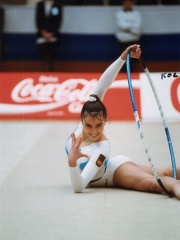
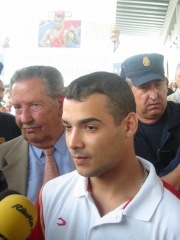
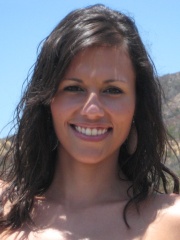
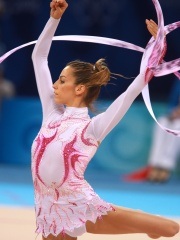
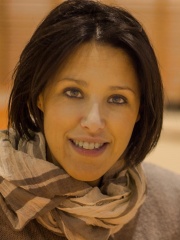



The Most Famous
GYMNASTS from Spain
Top 10
The following people are considered by Pantheon to be the top 10 most legendary Spanish Gymnasts of all time. This list of famous Spanish Gymnasts is sorted by HPI (Historical Popularity Index), a metric that aggregates information on a biography's online popularity. Visit the rankings page to view the entire list of Spanish Gymnasts.

1. Carolina Pascual (b. 1976)
With an HPI of 42.09, Carolina Pascual is the most famous Spanish Gymnast. Her biography has been translated into 16 different languages on wikipedia.
Carolina Pascual Gracia (born 17 June 1976 in Orihuela, Alicante) is a former Spanish Individual Rhythmic Gymnast. She is the 1992 Olympics silver medalist and the 1993 European all-around bronze medalist.

2. Gervasio Deferr (b. 1980)
With an HPI of 41.92, Gervasio Deferr is the 2nd most famous Spanish Gymnast. His biography has been translated into 21 different languages.
Gervasio Deferr Ángel (born 7 November 1980) is a Spanish former artistic gymnast who competed at three Olympic Games. He is a two-time Olympic champion on the vault (2000, 2004) and an Olympic silver medalist on the floor exercise (2008). He is also the 1999 and 2007 World silver medalist on the floor exercise.

3. Estela Giménez (b. 1979)
With an HPI of 41.12, Estela Giménez is the 3rd most famous Spanish Gymnast. Her biography has been translated into 17 different languages.
Estela Giménez Cid (born 29 March 1979 in Madrid, Spain) is a Spanish former rhythmic gymnast who won a gold medal at the 1996 Summer Olympics in the group all-around event. The team was formed by Giménez, Marta Baldó, Nuria Cabanillas, Lorena Guréndez, Estíbaliz Martínez and Tania Lamarca. She won the world championship twice in the three balls/two ribbons discipline. She was featured on the cover of the Your Shape game for Wii. She was the host of Insert Coin on AXN Spain from 2008 to 2012.

4. Almudena Cid (b. 1980)
With an HPI of 40.27, Almudena Cid is the 4th most famous Spanish Gymnast. Her biography has been translated into 17 different languages.
Almudena Cid Tostado (born 15 June 1980 in Vitoria, País Vasco, Spain) is a former Spanish individual rhythmic gymnast who competed on the Spanish national team. She is the only rhythmic gymnast who has competed in four Olympic finals. She became the first Spanish gymnast in history to have competed in two Olympic finals, Atlanta and Sydney, and she is the only rhythmic gymnast to make the finals at four consecutive Olympic Games: Atlanta 1996, Sydney 2000, Athens 2004 and Beijing 2008. She also won the gold medal in the XVth Mediterranean Games Almería 2005 and she has been awarded many other national and international recognitions, including the 2009 gold medal in the Royal Order of Sports Merit, a Spanish civil Order of Merit intended to recognise yearly activities in the fields of sport and physical education. In June 2001, the Fédération Internationale de Gymnastique announced that Almudena's "body-apparatus relationship" with the ball was approved by the Rhythmic Gymnastics Technical Committee. As the code describes the Cid Tostado element:Starting position: on one knee, leg forward, ball held with the foot. large roll of the ball on both legs. Originality 0.10 (§ 2.6.5.)After a career lasting 21 years, she retired from rhythmic gymnastics on 23 August 2008. Currently, she is working as a sports commentator for rhythmic gymnastics competitions. Since 2014, she has also been writing Olympia, a children's collection of stories in which she talks about her sporting life.
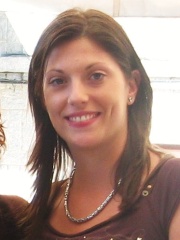
5. Lorena Guréndez (b. 1981)
With an HPI of 39.64, Lorena Guréndez is the 5th most famous Spanish Gymnast. Her biography has been translated into 15 different languages.
Lorena Guréndez García (born 7 May 1981 in Vitoria) is a Spanish rhythmic gymnast and Olympic Champion. She competed at the 1996 Summer Olympics in Atlanta, and won a gold medal with the Spanish group. The team was formed by Lorena, Estela Giménez, Marta Baldó, Nuria Cabanillas, Estíbaliz Martínez and Tania Lamarca. Also, she was twice world champion: one in 3 balls/2 ribbons and other in 3 ribbons/2 hoops. In 1995, she was the Spanish junior champion, individually and in teams with the Oskitxo Club. In 1996, she became part of the Spanish national rhythmic gymnastics team in the ensemble modality. Since then, all medals obtained in official competitions were obtained as a member of the Spanish ensemble. In 1996, she won her first world title in the final of three balls and two ribbons at the World Championship in Budapest, where she also won silver in the general competition. 1997, she was runner-up in Europe in 5 balls and bronze in 3 balls and 2 ribbons in the European Championship in Patras. In 1998, she won her second world title at the World Championship in Seville, this time in 3 ribbons and 2 rings, as well as winning silver in the general competition. In the European Championship of Budapest held in 1999 he was bronze medal in the competition of 3 ribbons and 2 rings. 2000, she participated in her second Olympic Games, finishing in tenth position in the team competition in Sydney 2000. In 2013, the documentary Las Niñas de Oro (The Golden Girls) premiered on YouTube. It tells the story of the Olympic champion team in Atlanta through interviews with the gymnasts themselves, and in 2016, she attended the 20th Anniversary Gala of the Gold Medal in Atlanta '96 in Badajoz with the rest of the team. She has received several awards, including the Olympic Order from the Spanish Olympic Committee (1996), the Gold Plaque of the Royal Order of Sports Merit (1996), the Baron de Güell Cup at the National Sports Awards (1997), and the Gold Medal of the Royal Order of Sports Merit (2015). She is married to the artistic gymnast José Luis Fernández. Lorena is the youngest Spanish athlete to win an Olympic medal, doing so at the age of 15 years and 87 days.

6. Tania Lamarca (b. 1980)
With an HPI of 39.61, Tania Lamarca is the 6th most famous Spanish Gymnast. Her biography has been translated into 18 different languages.
Tania Lamarca Celada (born 30 April 1980 in Vitoria-Gasteiz, Spain) is a former Spanish rhythmic gymnast and Olympic medallist. She won a gold medal with the Spanish group at the 1996 Summer Olympics in Atlanta. The team was formed by Tania, Estela Giménez, Marta Baldó, Nuria Cabanillas, Lorena Guréndez and Estíbaliz Martínez. Also she was two times world champion in 3 balls/2 ribbons. In 1994, she was the Spanish individual junior champion with Club Aurrera. In 1995, she became part of the Spain national gymnastics team in the team competitions. Since then, all the medals she obtained in official competitions were obtained as a member of the Spain's team. Her first important competition was the European Championship in Prague, in which she was proclaimed sub-champion of Europe in 3 balls and 2 ribbons, besides taking another two bronze medals in the general competition and in the final of 5 rings. That same year she was proclaimed world champion in the modality of 3 balls and 2 ribbons in the World Championship in Vienna. In addition to this gold medal, she won two silver medals in the general competition and in the final of 5 hoops. In 1996, she won his second world title in the final of 3 balls and 2 ribbons at the World Championship in Budapest, where he also won the silver medal in the general competition. That year she achieved the greatest success of her sports career by becoming Olympic champion in the rhythmic gymnastics team modality in the Atlanta Olympic Games, together with her teammates Marta Baldó, Nuria Cabanillas, Estela Giménez, Lorena Guréndez and Estíbaliz Martínez. After this achievement, the group was baptized by the media as the Golden Girls. In 1997, she was runner-up in Europe in 5 balls and bronze in 3 balls and 2 ribbons in the European Championship in Patras. After her retirement, she obtained the title of National Rhythmic Gymnastics Coach, being a coach at school level in Vitoria, Zaragoza and Escarrilla, as well as teaching sports such as snowboarding for 5 years at the Aramón Formigal station, where she also worked as an administrator. In 2008, she published his autobiography, Tears for a Medal, written with the journalist Cristina Gallo. In 2013, the documentary Las Niñas de Oro (The Golden Girls), directed by Carlos Beltrán, was released on YouTube. It tells the story of the Olympic champion team in Atlanta through interviews with the gymnasts themselves, and in 2016 she attended the 20th Anniversary Gala of the gold medal in Atlanta '96 in Badajoz with the rest of the team. She has received several awards, including the Olympic Order from the Spanish Olympic Committee (1996), the Gold Plaque of the Royal Order of Sports Merit (1996), the Baron de Güell Cup at the National Sports Awards (1997), and the Gold Medal of the Royal Order of Sports Merit (2015). In 2020, she lives in Escarrilla, teaches annually at the Tania Lamarca Rhythmic Gymnastics Campus, gives numerous lectures on the knowledge and values that her sports experience has brought her, and is a member of the Sport & Play sports coaching team. In 2016, she was a candidate for the presidency of the Alava Gymnastics Federation, and for 2017 she presented her sportswear line.

7. Patricia Moreno (b. 1988)
With an HPI of 36.52, Patricia Moreno is the 7th most famous Spanish Gymnast. Her biography has been translated into 16 different languages.
Patricia Moreno Sánchez (born January 7, 1988, in Madrid) is a Spanish former artistic gymnast. Moreno began gymnastics in 1995 and admired Romanian Simona Amânar. Her best event was floor exercise.

8. Lourdes Mohedano (b. 1995)
With an HPI of 31.16, Lourdes Mohedano is the 8th most famous Spanish Gymnast. Her biography has been translated into 14 different languages.
Lourdes Mohedano Sanchez de Mora (born 17 June 1995 in Córdoba) is a Spanish group rhythmic gymnast.

9. Alba Petisco (b. 2003)
With an HPI of 24.97, Alba Petisco is the 9th most famous Spanish Gymnast. Her biography has been translated into 6 different languages.
Alba Petisco de San Fulgencio (born 1 February 2003) is a Spanish artistic gymnast. She is the 2025 European all-around silver medalist. She represented Spain at the 2020 and 2024 Olympic Games as well as the 2018 Youth Olympics where she was part of the Mixed NOC team who won gold in the mixed multi-discipline team competition. She won a bronze medal with the Spanish team at the 2022 Mediterranean Games. Additionally, she is the 2020 and 2022 Spanish all-around champion.

10. Néstor Abad (b. 1993)
With an HPI of 21.73, Néstor Abad is the 10th most famous Spanish Gymnast. His biography has been translated into 6 different languages.
Néstor Abad Sanjuan (born 29 March 1993) is a Spanish male artistic gymnast. He represented Spain at the 2016, 2020, and 2024 Olympics Games. Additionally he competed at the inaugural Youth Olympic Games in 2010 where he won three medals.
People
Pantheon has 11 people classified as Spanish gymnasts born between 1976 and 2003. Of these 11, 11 (100.00%) of them are still alive today. The most famous living Spanish gymnasts include Carolina Pascual, Gervasio Deferr, and Estela Giménez. As of April 2024, 2 new Spanish gymnasts have been added to Pantheon including Patricia Moreno, and Lourdes Mohedano.
Living Spanish Gymnasts
Go to all RankingsCarolina Pascual
1976 - Present
HPI: 42.09
Gervasio Deferr
1980 - Present
HPI: 41.92
Estela Giménez
1979 - Present
HPI: 41.12
Almudena Cid
1980 - Present
HPI: 40.27
Lorena Guréndez
1981 - Present
HPI: 39.64
Tania Lamarca
1980 - Present
HPI: 39.61
Patricia Moreno
1988 - Present
HPI: 36.52
Lourdes Mohedano
1995 - Present
HPI: 31.16
Alba Petisco
2003 - Present
HPI: 24.97
Néstor Abad
1993 - Present
HPI: 21.73
Marina González
2002 - Present
HPI: 9.55


